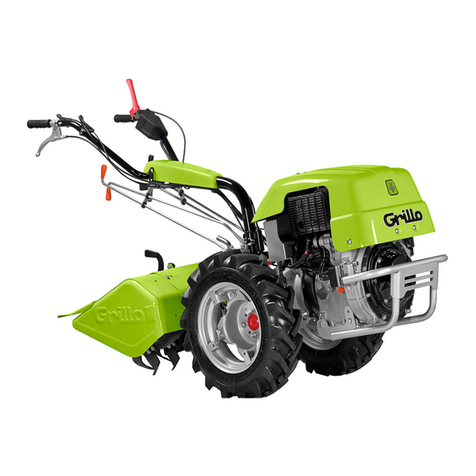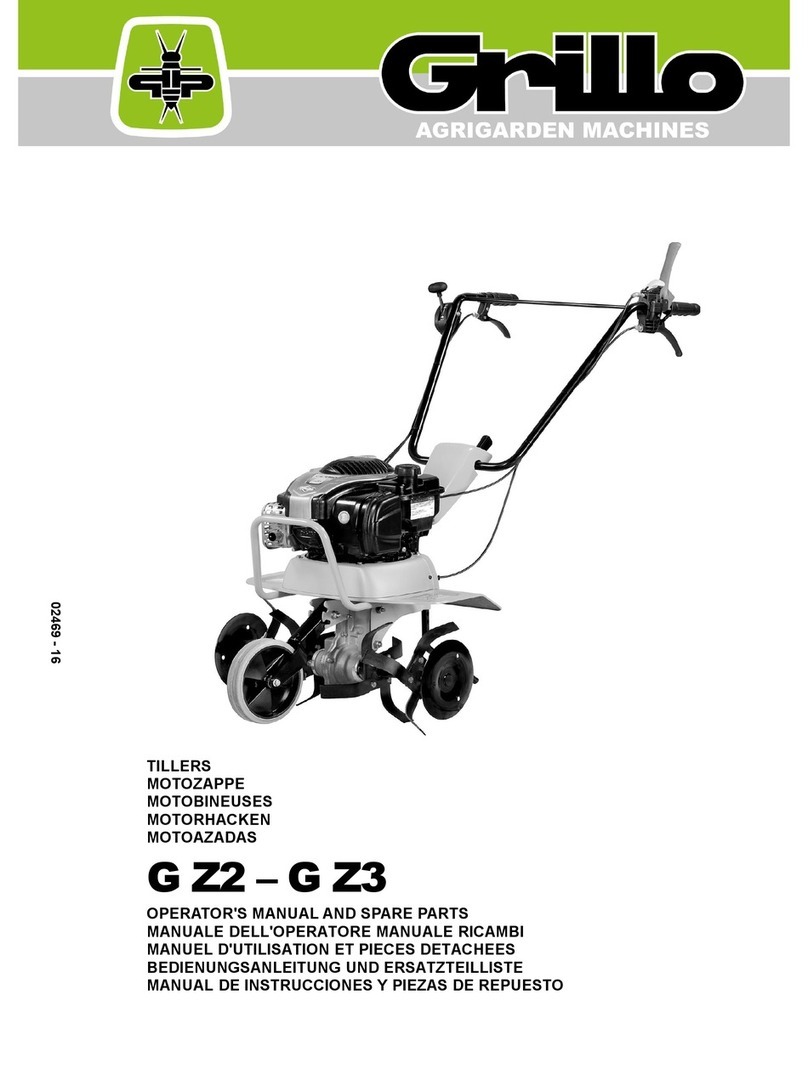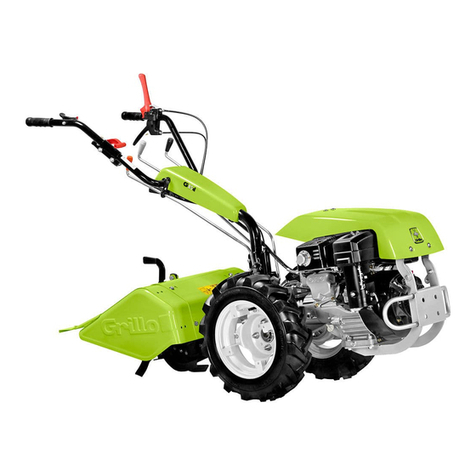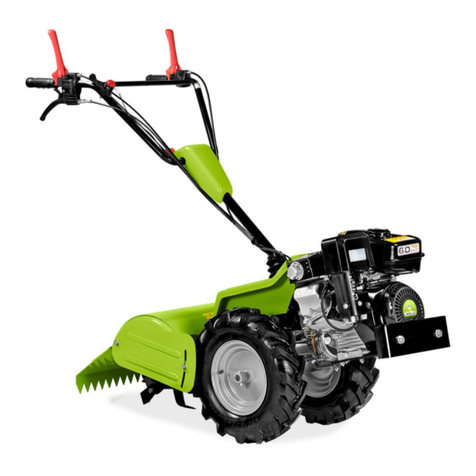A burst which separates the tyre from the rim parts can cause serious injury or
death.
La separazione fra pneumatico e cerchione, causata dall’esplosione del
pneumatico, può provocare serie ferite o addirittura la morte.
La séparation entre le pneu et la jante, provoquée par l’explosion d’une roue
peut causer des dommages, blessures ou la mort.
Die Trennung der Räder von den Felgen durch Explosion kann schwere
Verletzungen oder den Tod verursachen.
La separación entre el neumático y la llanta producida por la explosión del
neumático puede provocar graves herida e incluso la muerte.
A separação entre o pneumático e o aro, provocada pela explosão do
pneumático, pode causar graves ferimentos ou até mesmo a morte.
Handle fuel with care, it is highly flammable: Do not refuel machine while
smoking, when machine is near an open flame or sparks, or when the engine is
running. Stop the engine.
Maneggiare il carburante con cura, è altamente infiammabile; non fate
rifornimento mentre fumate, o vicino a fiamme o scintille, o quando il motore è
acceso.
Manier avec soin le carburant car c’est très inflammable. Ne pas remplir le
réservoir si vous tes en train de fumer ou pendant que la machine est près du
feu ou d’étincelles ou encore pendant que la machine travaille. Arr ter le
moteur.
Treibstoff vorsichtig handhaben, da er sehr entzündbar ist: beim Tanken nicht
rauchen. Nicht tanken, wenn die Maschine in der Nähe von Flammen oder
Funken ist oder wenn der Motor läuft. Immer den Motor abschalten.
Manejar el combustible con cuidado porque es sumamente inflamable; no
repostar mientras se fuma o cerca de llamas o chispas, o cuando el motor está
encendido.
Manuseie o carburante com cuidado, pois este è altamente inflamável; não
fume durante o abastecimento da máquina ou enquanto o motor estiver ligado,
não o aproximado de chama ou de faíscas.
Prevent battery explosions: keep sparks, lighted matches and open flames
away from the top of the battery. Battery gas can explode.
Per prevenire l’esplosione della batteria, tenete scintille, fiammiferi accesi e
fiamme lontani dalla stessa. Il gas della batteria può esplodere.
Prévenir l’explosion de la batterie: tenir les étincelles, les allumettes et le feu
loin de la batterie. Le gaz de la batterie peut exploser.
Vorbeugung der Batterie-Explosion. Entfernen Sie Funken, Zündhölzer und
Flammen von der Batterie. Das Batteriegas kann explodieren.
Para prevenir la explosión de la batería, mantener chispas, cerillas encendidas
y llamas lejos de la misma. El gas de la batería puede explotar.
Para prevenir explosão da bateria ter centelhas, fósforos acendido e chamas
longe da mesma. O gás da bateria poderia explodir.
WARNING! SHARP PARTS. Keep hands and feet away. Do not operate the
mower over gravel or foreign bodies which may be sucked up and ejected by
the blades, generating a danger. Keep people away. Remove the key and read
the instruction manual before attempting to carry out any maintenance or
repairs to the machine.
ATTENZIONE! ORGANO TAGLIENTE. Tenere lontano mani e piedi. Non
lavorare col rasaerba sopra alla ghiaia o corpi estranei che possono essere
aspirati e centrifugati dalle lame risultando molto pericolosi, tenere lontano le
persone. Togliere la chiave e leggere le istruzioni prima di effettuare qualsiasi
operazione di manutenzione e riparazione.
ATTENTION! ORGANE TRANCHANT. Éloigner les mains et les pieds. Ne pas
utiliser la tondeuse sur le gravier ou sur des corps qui peuvent tre aspirés et
centrifugés par les lames et devenir très dangereux. Les personnes doivent se
trouver à une certaine distance. Enlever la clé et lire les instructions avant toute
opération de maintenance et de réparation.
ACHTUNG! SCHARFE KLINGEN. Hände und Füße fernhalten. Beim Mähen
nicht über Schotter, Steine oder andere Fremdkörper fahren, da diese durch die
Drehbewegung der Messer angesaugt und weggeschleudert werden können
(Verletzungsgefahr). Nicht in der Nähe von anderen Personen mähen. Vor
jedem Wartungs- bzw. Reparatureingriff den Startschlüssel abziehen und die
Gebrauchsanleitung durchlesen.
¡PELIGRO! ÓRGANO CORTANTE. Mantener alejados los pies y las manos.
No limpiar la herramienta con el motor en marcha. ¡Peligro! Expulsión de
objetos: mantener alejadas a las personas. Atención: quitar la llave y leer las
instrucciones antes de efectuar cualquier operación de mantenimiento o
reparación.
ATENÇÃO! Órgão cortante. Ficar longe com pés e mãos. Não trabalhar com a
máquina sobre cascalho ou objetos que podem ser aspirados e centrifugados
gerando perigo, manter-se longe das pessoas.
Tirar a chave de ignição e ler as instruções antes de efetuar qualquer operação
de reparo ou serviço.




































